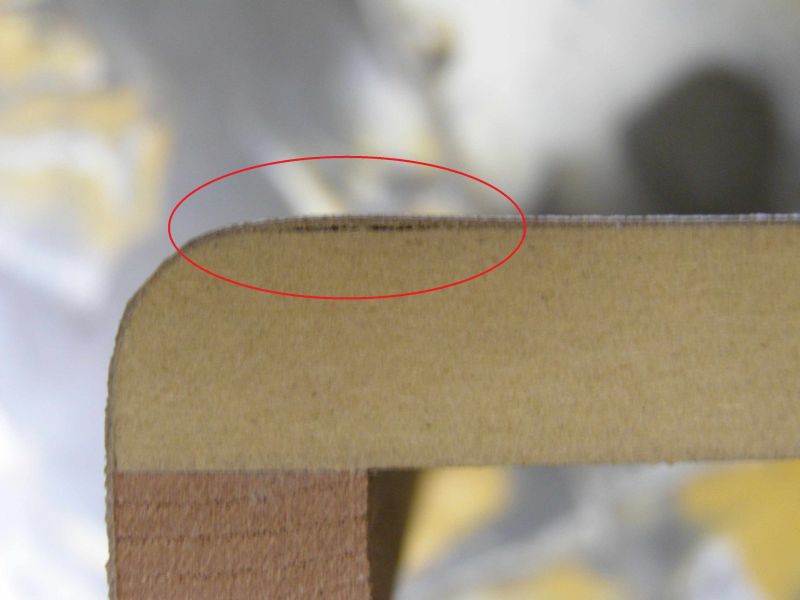Heating Laminate for Postforming
A question about a slight delamination problem prompts a long set of tips about effective heating for postforming. February 1, 2015
Question (WOODWEB Member) :
We are trying to start post forming countertops and have a quality issue. So far we have not been able to get a good bond just before the radius. We have made many adjustments and trials but we continuously see that the laminate lifts up on the same spot. We use regular contact adhesive. Does anyone have any suggestions?

Click here for higher quality, full size image
Forum Responses
(Laminate and Solid Surfacing Forum)
From contributor O:
I typically avoid this issue by starting the layup on the radius and then working down the straight edges, that, and lots of pressure on the radius before moving on. You can also help the laminate form to the radius by heating it, softly and slowly, as you are making the turn. Hair dryer on high or heat gun on low works for me. Use vertical grade (thinner) on the radius work Ė itís much more pliable. The best solution though is to use matched PVC banding. Itís much easier to apply and much more forgiving.
From contributor J:
"We use regular contact adhesive." Make sure that the glue you are using is post-formable.
From contributor E:
I agree with what has been said. I worked for a tour bus fit out company and they had a table with exposed heating elements in it. You used a special crayon and marked the area to be bent. You then placed the laminate over the element until the wax melted. The piece was then ready to bend onto your substrate. By the way the spray contact adhesive was applied before the heating. You can bend some pretty thick laminate to some pretty tight radiuses this way. I suppose a heat gun would do the same thing on a small piece but that crayon takes the guesswork out of it.
From contributor G:
The truth is that always happens to some degree. The least amount of this I have seen is when an Evans bender is used because of the way it clamps. If you are using a heat bar try setting up a jig to clamp that area.
From contributor Y:
Tempilaq is what we always used to get the heat just right. We used the liquid type that is applied by the brush connected to the lid.
From the original questioner:
Thanks for the feed-back! We are using an Evans Postformer 0100 and are using an infrared thermometer to check the temp. I will try the tempilaque. Contributor G, I like your idea of using an additional clamping bar and will try that!
From contributor G:
The Evans post former should have clamps on it? Just practice different methods to improve but truthfully you may have a hard time getting it perfect. I just use a clock for the time. I like the thermometer idea though.
From Contributor M:
This has always been a difficult process.
1. I too have also used heat from a hair drier or heat gun on "low".
2. Another process that worked fairly well was to carefully sand the area of the radius on the inside surface to be a little thinner and similar to the V32 thickness before applying your glue and laminating in place.
From Contributor R:
How do you form your deck? Have you laid a square across the end to see if there might just be a minute dip in the deck at that spot that the laminate is just bridging and not forming into it? I see this a lot when someone puts too much pressure on a belt sander. It will cup the deck.
From the original questioner:
We have found the problem in the meantime. We preheated the machine with the heater located above the laminate and this caused the laminate to get hot over a much larger area and the laminate pulled away from the board too easily. Now we preheat with the heater away from the board, after the heater has reached maximum temperature we put it in position and heat the laminate quickly and can form it without pulling the panel loose near the radius.
